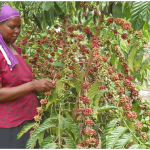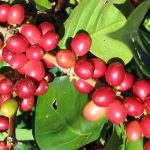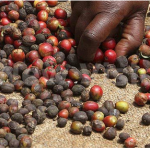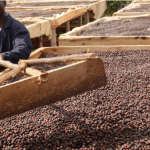My name is Georwell Emanu, a full-time fish farmer based in Tororo and Busia districts. Last December, my business proposal won the Shs50m grand prize in the Kickstart Youth Entreprenuership competition, which was organised by Nile Breweries in partnership with NTV and Enterprise Uganda.
I have five years of experience in fish farming now. I have been at it since 2010. However, the story goes back to 2007 when I came back from Egypt, where I acquired a Bachelor’s degree in Fisheries and Aquaculture from Cairo University. I was searching on how I could go about putting into practice what I had studied.
What I found was a disheartening picture. I found that fish farmers did not have sufficient knowledge and that the cost of doing fish farming was very high.
Sharing knowledge
Getting fingerlings (stock of tiny young fish) as well as fish feed was very hard. Only the fisheries research institute in Kajjansi had fingerlings and feed on the market, and it imported both, which made the cost very high.
At the time, I wanted to start fish farming but I did not have the funds. Having seen how relying on imported fingerlings and feed was expensive, I resolved to only buy the initial stock and use it to produce my own fingerlings thereafter. This is unlike other farmers who bought a new stock of fingerlings every season.
I also resolved that I would make my own feed. That is how I decided to start by offering consultancy services to those already in the business. I had the knowledge because I had studied the field, unlike most of the ones in the business then. A number of them began consulting me on things like feeding of their fish, treating them, hatching them and the like.
I was now earning from consultancy services. But at that time, I enrolled for a degree in medicine at Makerere University, which meant I had less time to continue with the consultancy.
It was in 2010 when I finally started fish farming on my own. I acquired good quality breed stock from Dominion International [located in Kisumu, Kenya]. It is one of the world’s best companies in all things related to fish farming.
Growing business
While looking for a place to set up a hatchery, I had realised that the public swimming pool of Tororo Town Council lay abandoned. I approached the authorities and presented them my plan to turn it into a hatchery and to use the nearby ponds to rear my fish. They agreed to hire me the place at Shs15,000 per year.
It has been a long learning curve, but now I am getting to a level where I will considerably benefit from the venture. In the first years, I did not realise much from it because there was a lot I was learning. Also, I would reinvest the proceeds in the business. This was until the last two years when I have realised considerable profits; part of which I have used put to meet personal needs like building a home.
Now, I believe I have entered a phase of seeing our business grow, especially with this Kickstart competition prize money, which is going to help me operate on a scale I could hardly afford on my own.
Efficient method
Like I have said, I began with ponds next to the defunct swimming pool. From the hatchery I would transfer the young fish to ponds to grow. But as time passed I saw why I needed to shift to lake-based cages.
Two years ago, in late 2012, I shifted totally to cages, which I established at Majanji Landing site in Busia District. I use the ponds only as an intermediary for young fish that have left the hatchery and on their way to the cages.
I settled for lake-based cages as the system I would use because it requires less labour, takes less money and the technology is easily replicable and adaptable.
On the financial side, I will give you an example of what Shs5m used on a cage can do compared to putting the same amount into ponds or tanks.
You can raise a cage of 1,025 cubic metres, which will accommodate 5,000 fish, yielding 105,050 kilos (5,000 is putting it on the lower side). Using the same Shs5m for a pond, it will give you a pond of 600 cubic metres, which will hold about 1,800 fish. If you devote the Shs5m to tanks, it will give you three tanks of the type that can hold 900 fish each, giving you a total of 2,700 fish.
Minimise costs
Besides enabling you to rear comparatively more fish, the quality of yield from the lake-based cages is also better. The fish are heavier, they grow healthier and faster in cages, among other things. This is because the fresh water of the lake is a natural habitat for the fish, providing good quality abundant water all the time.
To further minimise costs, you also have to learn to make your own cages. A cage that would be Shs5m when already made costs me Shs2m-Shs3m to make because I have figured out how to minimise costs by making my own cages.
I can comfortably make cages from bamboo, eucalyptus poles and even metal. Currently, I use both bamboo and metal.
Value of partnership
From the beginning I resolved that I would hatch the fish myself because buying fingerlings every season is costly.
Today, by hatching my own fingerlings, I save Shs1.5m for every 10,000 that goes into a 5×5 cage. One of the reasons the business has proved difficult for farmers is that fingerlings cost alot. And, sometimes they fail to get the right quality, but you guard against all that if you do it yourself.
Besides, the hatchery housed in the former swimming pool, I have opened another hatchery in Kapangala, which is near Tororo Town.
This one is a year old now, and I use it to hatch only the males because they grow faster and at maturity they are bigger than the females. Since the males do not reproduce, they dedicate all their energies to growth.
From the start I did not do it alone, because I believe that partnering can help raise funds, share ideas and knowledge, share the responsibilities of monitoring and supervising, among other things.
I started with one partner, Proscovia Nakawuka, who was with me at medical school. She studied pharmacy. A little over a year ago, she sold her 25 per cent stake in the business to Robert Ochieng, who is my current partner.
About the competition
Kickstart Youth Entrepreneurship is a competition/ mentorship programme established last year by Nile Breweries (in conjunction with Enterprise Uganda and NTV) for the purpose of extending grants and mentorship to youthful entrepreneurs with great business ideas.
The programme/competition, which is meant to be annual, was open to young entrepreneurs who are between the ages of 18 and 35.
They submitted their business proposals and a total of twelve finalists was chosen for training and competition for the grand prize.
It was open to both those who had already started implementing their business ideas as well as those who were yet to start.
Full-time training was offered to the finalists, after which they were asked to draw up new plans incorporating what they had been taught.
Georwell Emanu was announced winner at the grand finale, which was attended by the Minister of Trade and Industry, Amelia Kyambadde.
Making fish feed and hatching fingerlings on farm has helped me boost the business
“By making my own feed I save Shs1,800 per kilogramme of feed. If you multiply that by the total number of kilogrammes consumed throughout a season by the stock in a cage of 10,000 fish, I will have saved about Shs5m on feed.
I make the feed using a variety of locally available materials such as maize jam, rice bran, sunflower cake, silverfish, snail shells, water hyacinth.
Address fish shortage
I have been using only six cages. With the Kickstart Challenge’s prize money, I will establish 12 more cages, which will enable me produce 48,000 kilos of fish every year.
My long-term target is to have 52 cages, producing a total of 208,000 kilos of fish a year. That means I am still looking for a way to get 40 more cages to make the total of 52.
If we can get to this point, we will not be benefitting only ourselves but we will also be benefitting many others by providing them with employment, especially the people who sell fish locally
We look to employ at least 100 people daily as vendors once we have this in place.
I am also looking to training fishermen in cage farming, so they can have more fish and in turn that will give the lake a breathing space.
Ray of hope
In fact, I am already training the local youth and women at Majanji landing site on how they can use cages to successfully rear fish. A number of them are picking it up.
The cages I set up in Majanji are proving to be a big ray of hope. A few years ago, government constructed a modern fish plant at the landing site (worth Shs3.9b), complete with icing and other means of fish preservation.
But the facility has been lying idle for two or three years due to a scarcity of fish.
Our cages are providing a new hope for the re-operationalisation of the facility.
There is also a factory nearby, which also closed down about two years ago due to scarcity of fish.
However, this can also begin to operate again if we can reach the target of 52 cages and others can also adopt the cages system instead of relying on nature, which has disappointed them.”
From Daily Monitor








